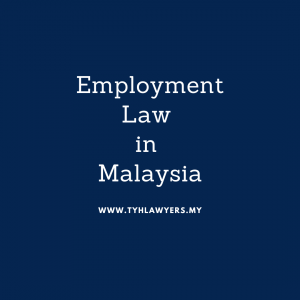The Law Of Retrenchment Due To COVID-19: Malaysian Employment Law

The Law Of Retrenchment Due To COVID-19: Malaysian Employment Law
Retrenchment means the discharge/dismissal of surplus labour or worker by the employer. Proof of redundancy, that is surplus of labour, is required for a retrenchment exercise to be valid.
Q: Can an employer carry out retrenchment exercises?
It is recognised that an employer is entitled to organise his business in the manner he considers best.
So long as that managerial power is exercised bona fide (good faith and not with bad intention), the decision exercised by an employer ought to be immune from examination by Court.
For a retrenchment, there must be a real redundancy and genuine financial impact on the business.
Q : Can the Covid-19 be the ground for retrenchment?
Yes, a company which is facing financial difficulties as a result of the Covid-19 outbreak, may find it necessary to organise his business and to reduce its business costs and expenses by terminating the surplus employees/worker.
Q: Any step that an employer needs to do before retrenching an employee?
Retrenchment must be the last resort to be taken.
In accordance with the Code of Conduct for Industrial Harmony, it is always highly advisable that an employer should have taken positive steps first to avert or minimise reduction of workforce by the adoption of appropriate measures such as:-
- Limitation on recruitment;
- Restriction of overtime work;
- Restriction of work on weekly day of rest;
- Reduction in number of hours of work;
- Reduction in number of shifts or days worked a week;
- Re-training and/or transfer to other department/work.
Q: Which employees should be selected for retrenchment?
An employer cannot randomly select which employees to be retrenched.
The Code of Conduct for Industrial Harmony provides guidelines on the best practice for retrenchment exercises. Although it is a guideline, failure to comply may be a factor that a Court take into consideration in determining whether the retrenchment exercise was done bona fide and in a fair manner.
The “Last In, First Out” (LIFO) rule is contained in the Code of Conduct for Industrial Harmony and it is the common industrial practice for retrenchment exercises.
The LIFO rule means that the most junior employee (in terms of lengthy of service) ought to be selected for retrenchment.
It is well-established principle that adherence to the LIFO rule must be normally observed unless there are valid reasons to countenance its departure, such as they have alternative objective selection criteria in selecting employees for retrenchment.
Q: Who has the burden to prove at the Industrial Court?
If an employee challenges the retrenchment in the Court, it is the duty and burden of the employer to prove that the retrenchment was made bona fide (good faith).
The employer who is seeking to rely on redundancy must prove it.
It is a question of fact.
Merely showing evidence of a re-organisation in the business or reduced sales is certainly not enough. The employer must prove that the circumstances are such that the employees’ functions are reduced to such an extent that they are considered redundant.
In determining whether the retrenchment was done bona fide, the Court will also look at several criteria, such as the profitability of the business, whether there was a drop in the sales, whether the workload of the employee in question remained the same and so on.
Q: What can an employee do if he is not happy with the retrenchment?
An employee who believes that he has been unfairly terminated, must lodge a complaint in writing with the Director General of Industrial Relations within 60 days from the date of dismissal.
An employee who fails to do so within the said 60 days will be time-barred.
If the parties are unable to settle the disputes during conciliation meeting arranged by the Department of Industrial Relations, the Minister of Human Resources may refer the matter to the Industrial Court.
Get Free Consultation From Our Employment Lawyers Now.
